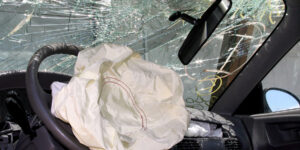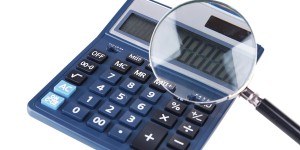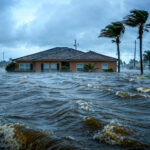 Cumulative net catastrophe losses for reinsurance companies from Hurricanes Harvey, Irma and Maria, along with the Mexico earthquakes, are between $20 billion-$25 billion out of an overall industry loss of $90 billion, A.M. Best said.
Cumulative net catastrophe losses for reinsurance companies from Hurricanes Harvey, Irma and Maria, along with the Mexico earthquakes, are between $20 billion-$25 billion out of an overall industry loss of $90 billion, A.M. Best said.
“We estimate that primary companies retained about half of the $90 billion, which leaves approximately $20 billion-$25 billion of losses going to alternative capital, most in the form of collateralized retro,” A.M. Best noted in its report titled “Global Reinsurance — Where Have All the Losses Gone?”
A.M. Best said its calculation of the $90 billion industry loss figure is are based on the sector’s reserving figures, acknowledging that this figure is well below some of the headline loss figures circulating in the market.
The global reinsurance composite – of companies that A.M. Best rates – is expected to deliver a combined ratio of approximately 110 percent and a return on equity between 0 percent and -5 percent for full year 2017.
The report affirmed that these are not stellar results but also are not too bad “considering the magnitude of the losses. “This compares to a five-year average combined ratio of approximately 91 percent and a five-year average return on equity of approximately 11 percent,” A.M. Best added.
The last time its global reinsurance composite reported a combined ratio above 100 percent was in 2011 after a series of global catastrophes, including the Japanese and New Zealand earthquakes and flooding in Thailand, the report said.
As in 2011, the current loss figure may be significant enough to hit earnings but not significant enough to meaningfully change market dynamics and pricing for a sustained period of time, A.M. Best explained.
The pricing response after the 2017 hurricane events will be affected by participation from alternative capital, which will affect the dynamics of the market both in the near and long term, the report predicted.
To gauge the earnings impact of the 2017 natural catastrophes, A.M. Best considered “net income loss coverage,” calculated as total net catastrophe losses divided by 2016 net income, which indicates how long it may take for companies to earn back these losses based on their own recent earnings.
A.M. Best has calculated it will take approximately five quarters for the reinsurance sector to earn back what has been paid out.
“Granted, improved rates can speed up this timeline, but some companies may take closer to two or three years to earn back these losses…,” the report continued.
A.M. Best maintains a negative outlook on the reinsurance sector, which has been driven primarily by the earnings profile of the sector and the competitive market.
“Our view has always been that risk-adjusted capital for the sector has been strong,” the ratings agency said, noting that that view still holds.
“Thus far, the data has not been surprising and there have been no rating changes to our rated reinsurance companies as a result of these loss events,” it added. “While some companies may lose a nominal amount of capital in 2017, this isn’t a significant depletion of capital that will be problematic or disruptive to the market.”
The ratings agency is concerned, however, that the sector’s earnings profile and trend continue to be strained and 2017 will weigh on the five-year average return on equity.
Source: A.M. Best





















 Soft Market Ahead? The Role of Digital Transformation for E&S Insurers
Soft Market Ahead? The Role of Digital Transformation for E&S Insurers  Moody’s: Rising Flood Risks Posing Greater Challenges for Eastern and Southern U.S.
Moody’s: Rising Flood Risks Posing Greater Challenges for Eastern and Southern U.S.  Surviving the ‘Silver Tsunami’: Closing the Talent, Skills Gap in Underwriting
Surviving the ‘Silver Tsunami’: Closing the Talent, Skills Gap in Underwriting  AIG Leads Launch of Reinsurance Syndicate at Lloyd’s
AIG Leads Launch of Reinsurance Syndicate at Lloyd’s 




